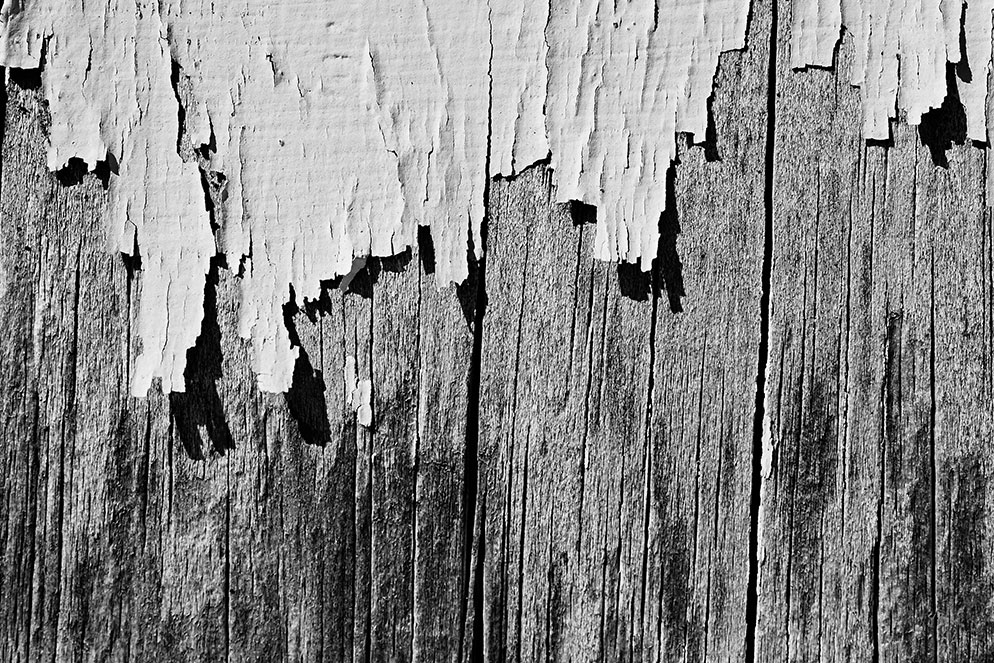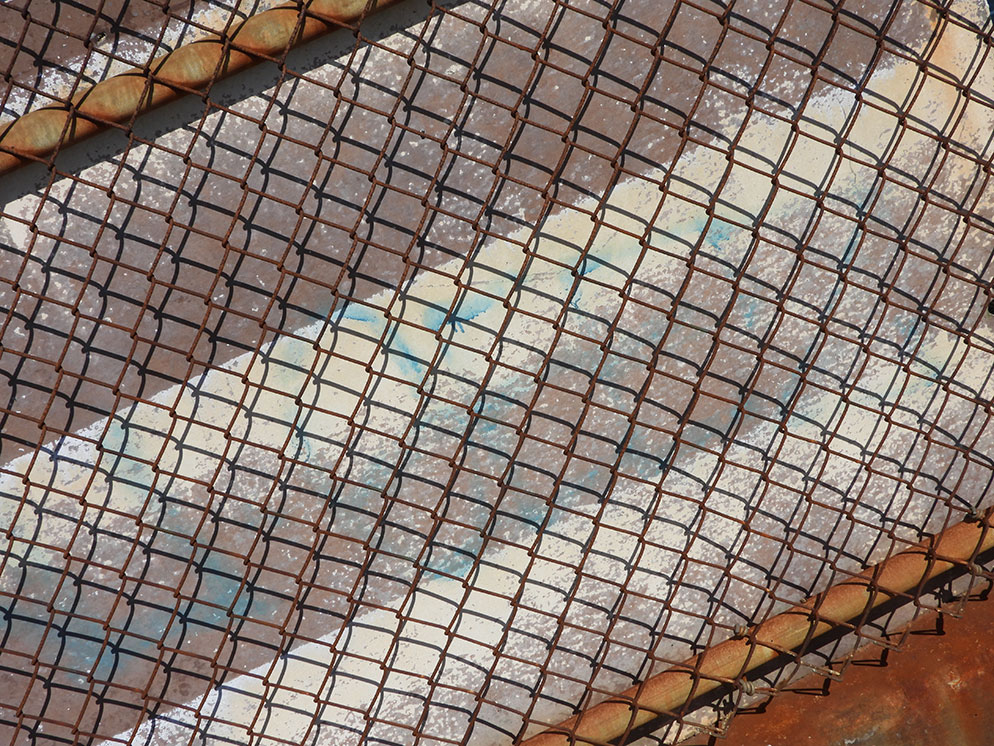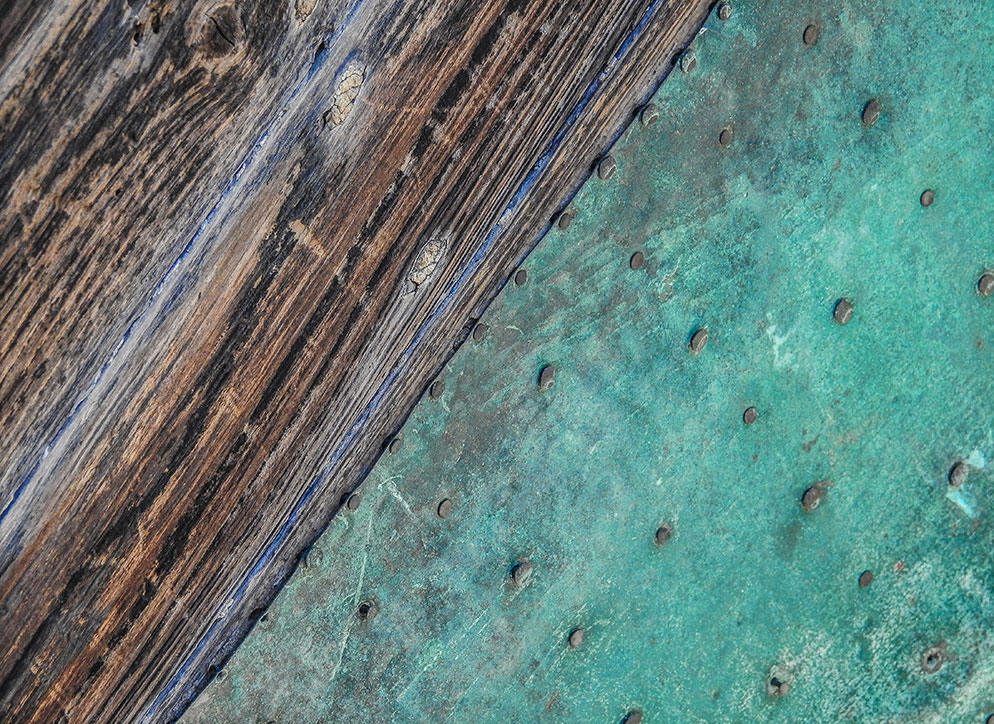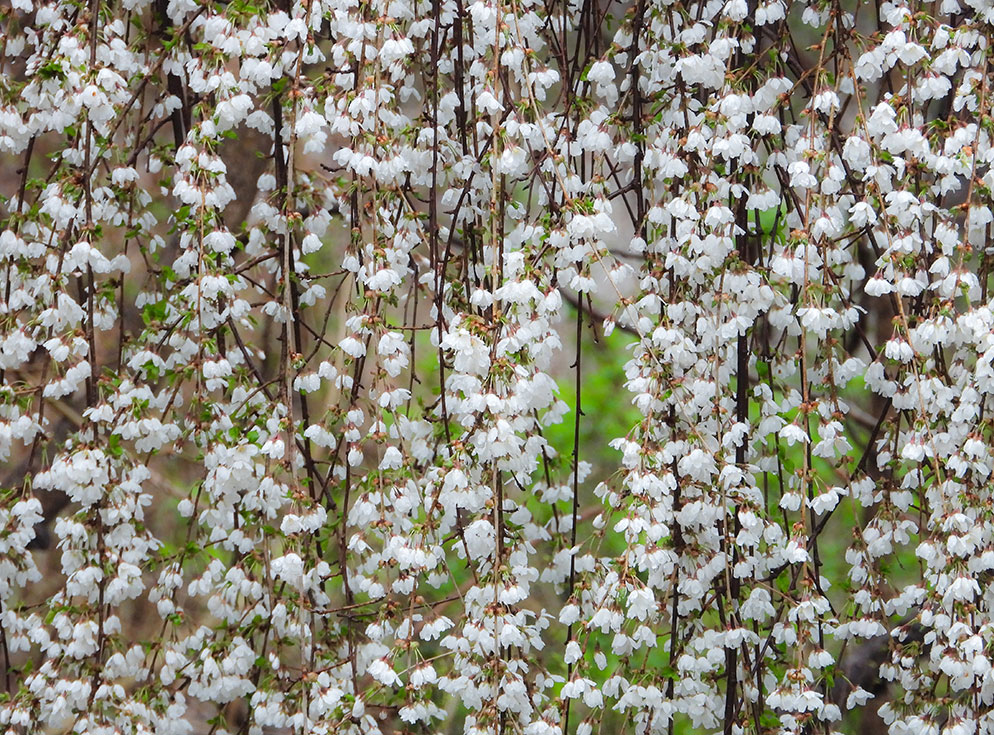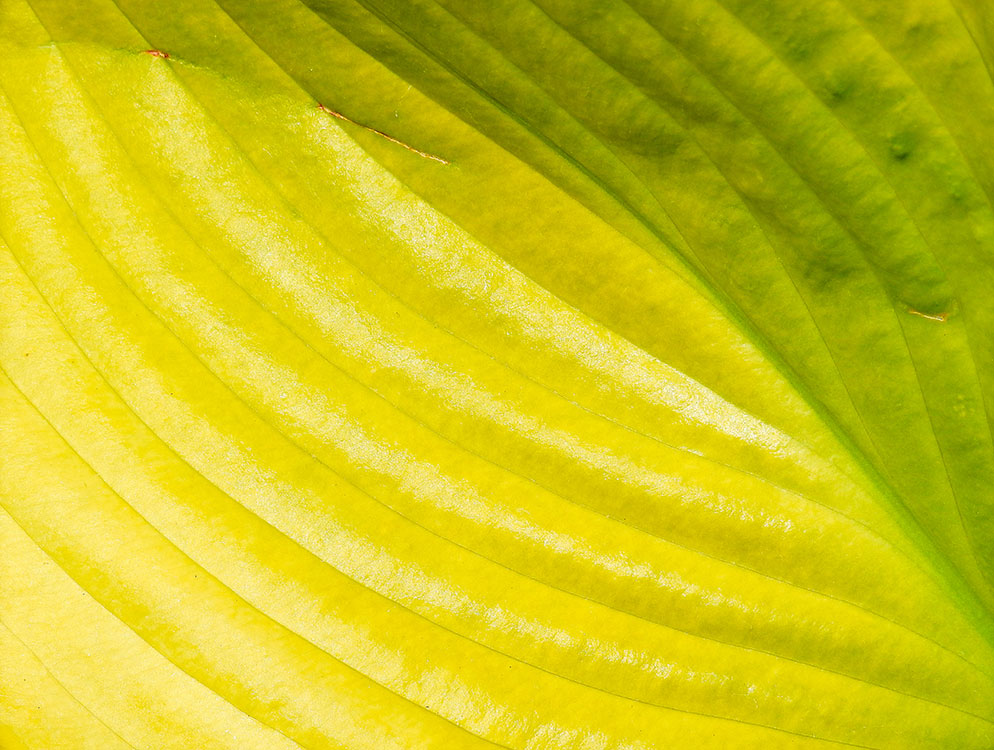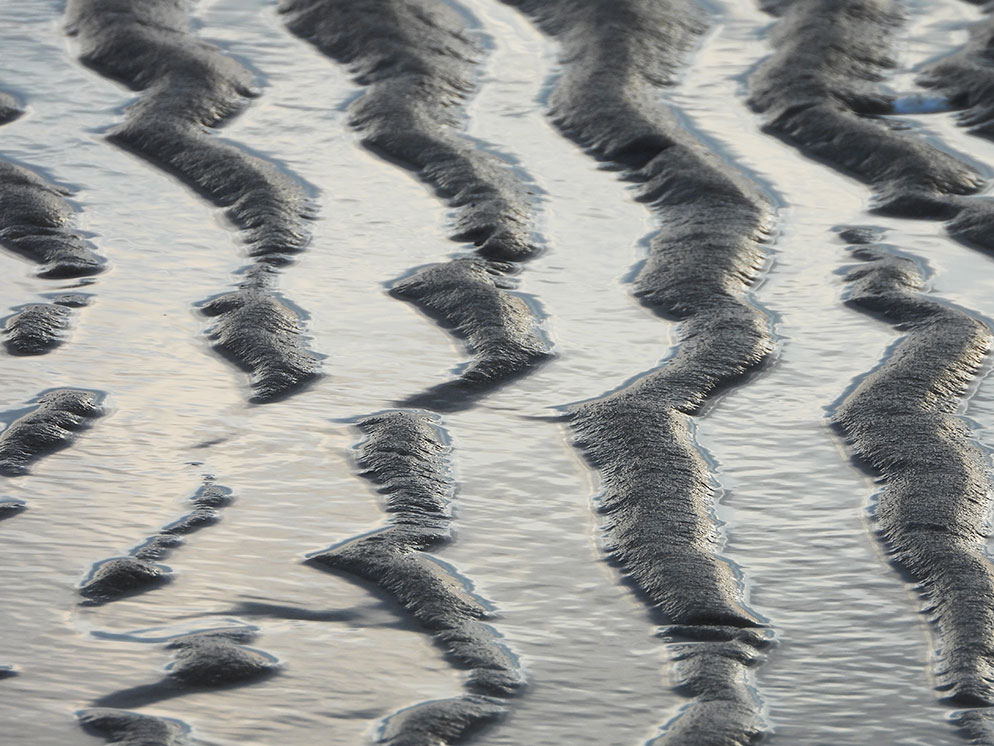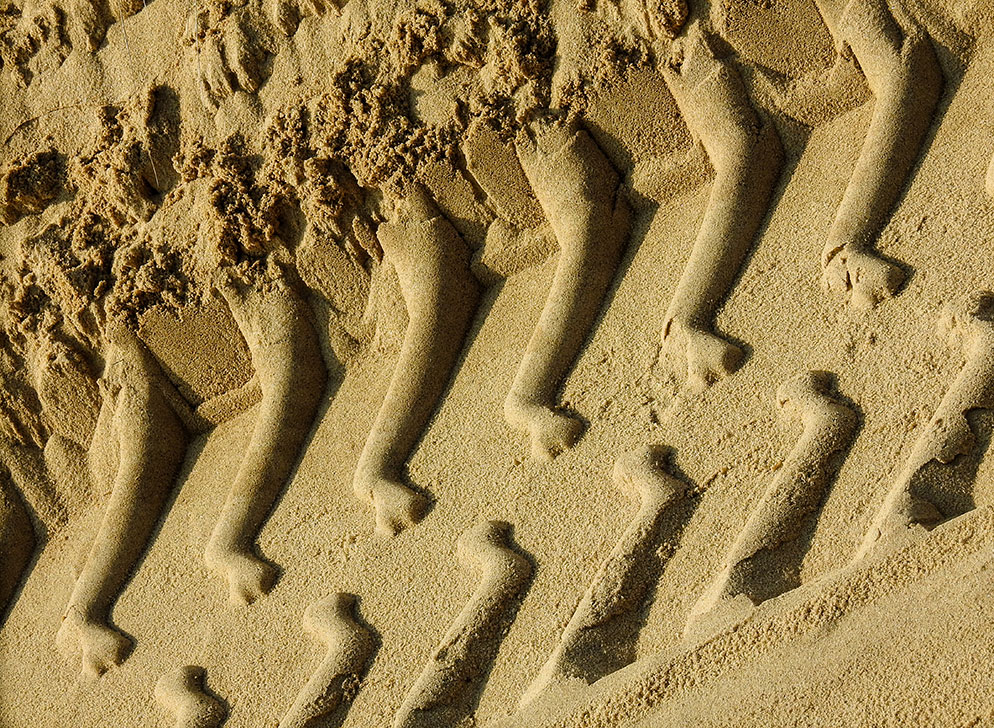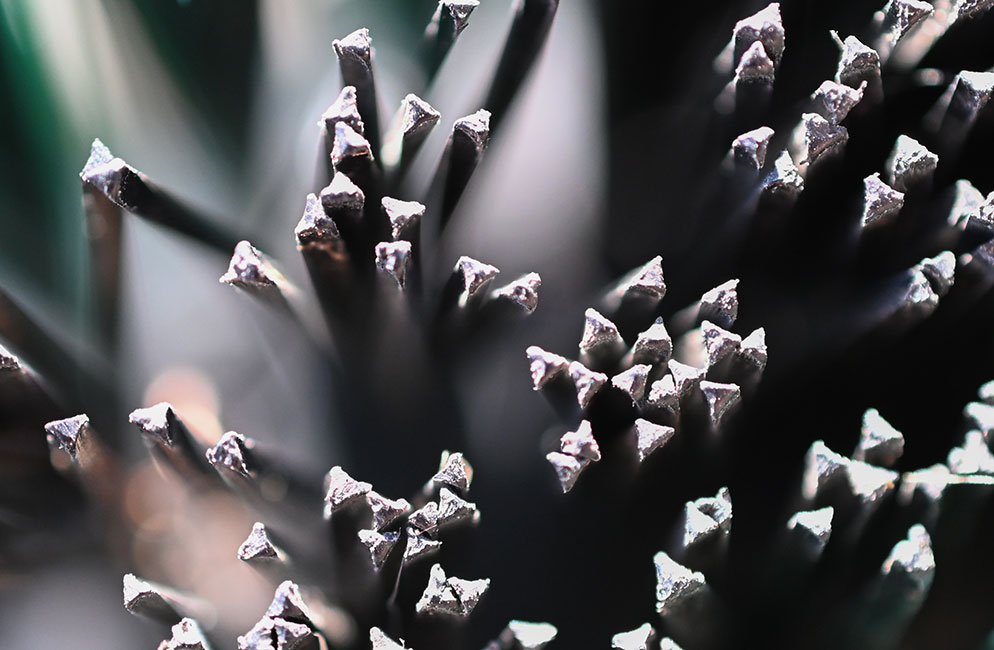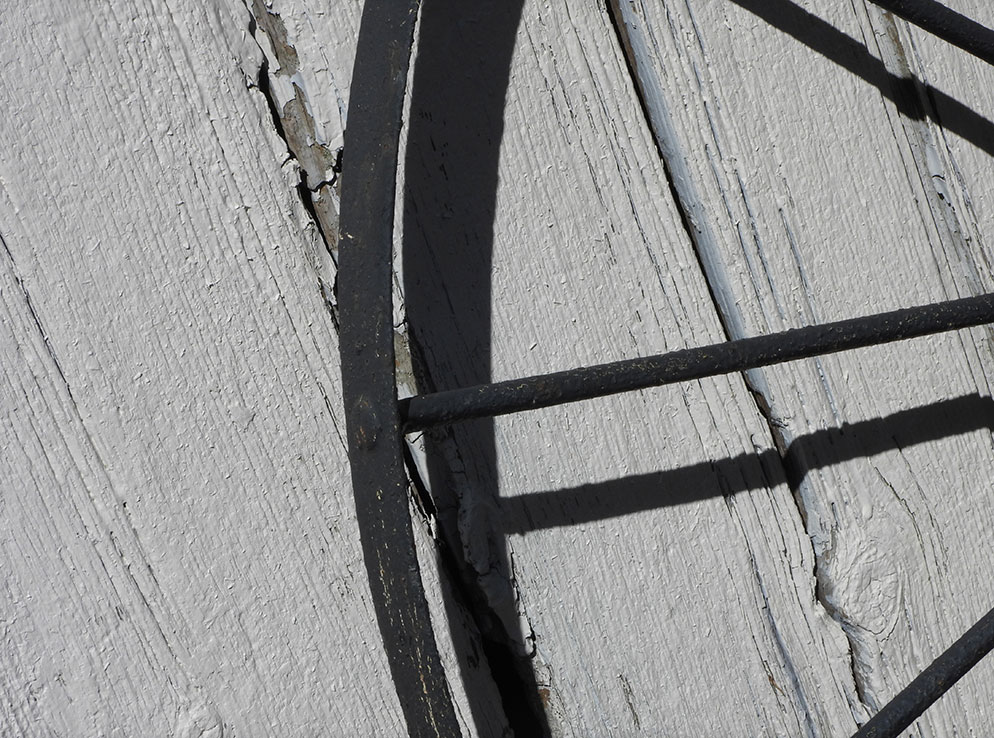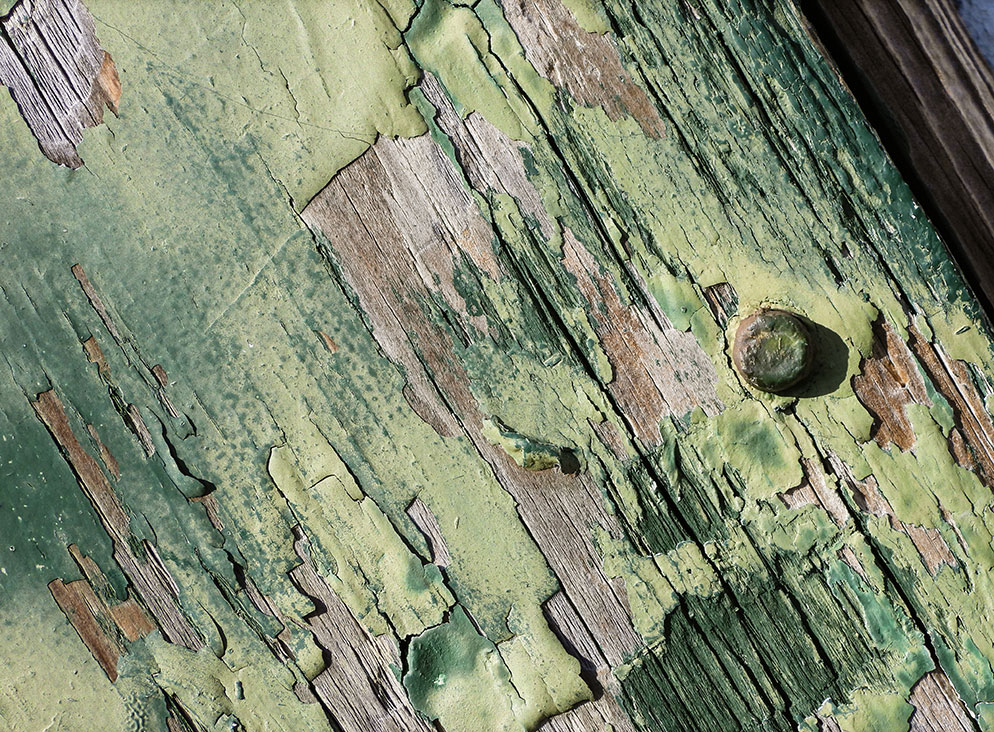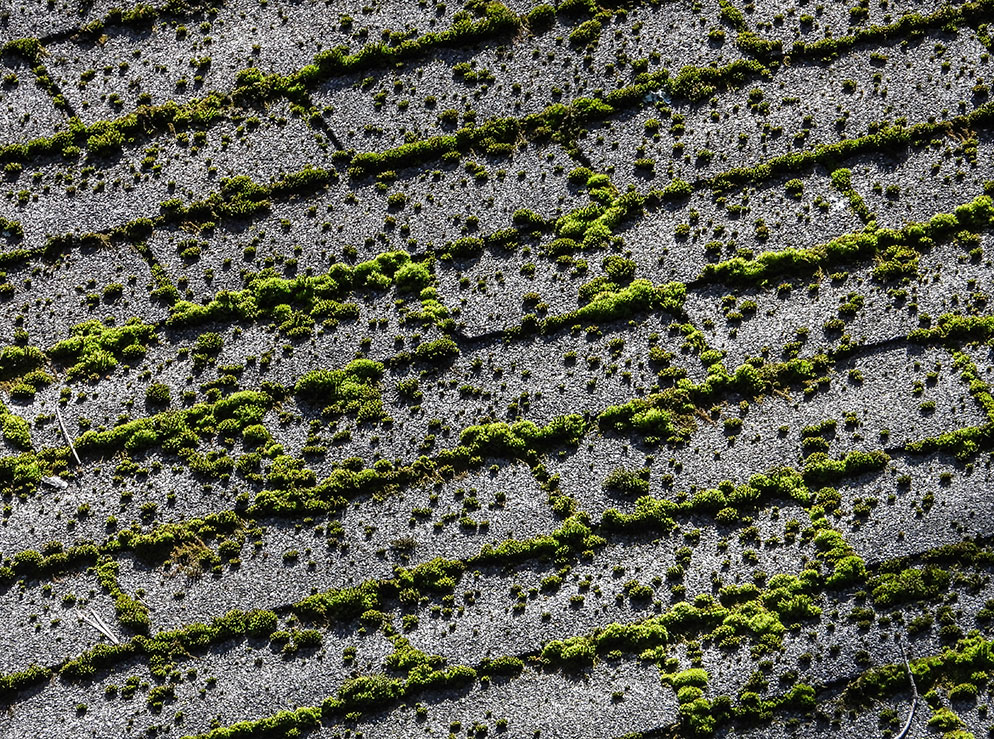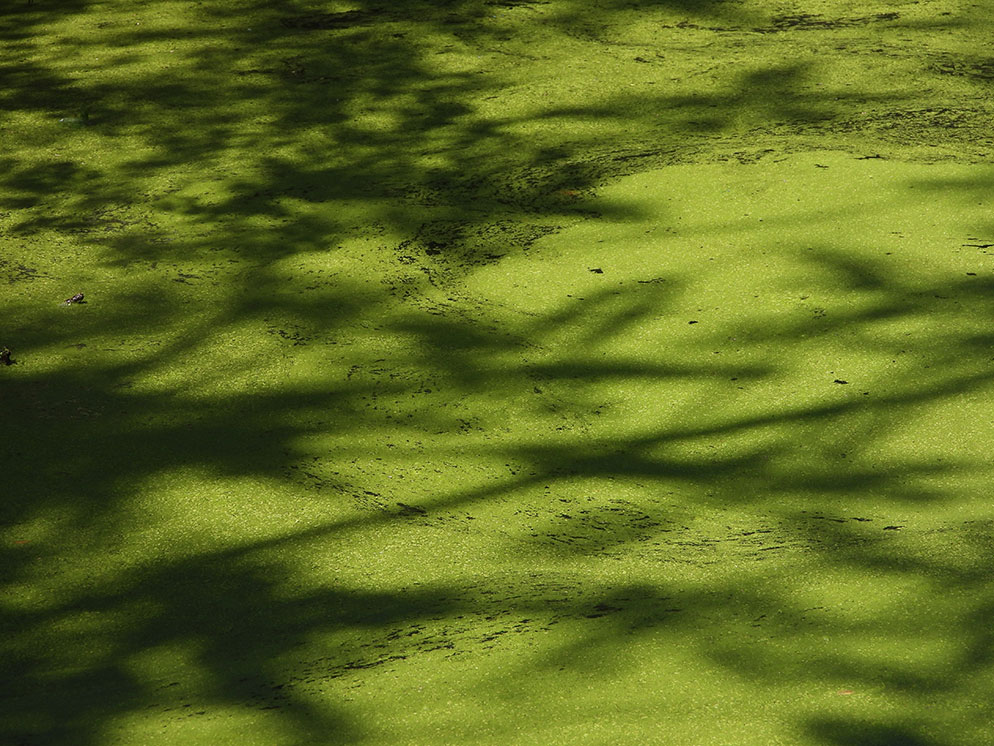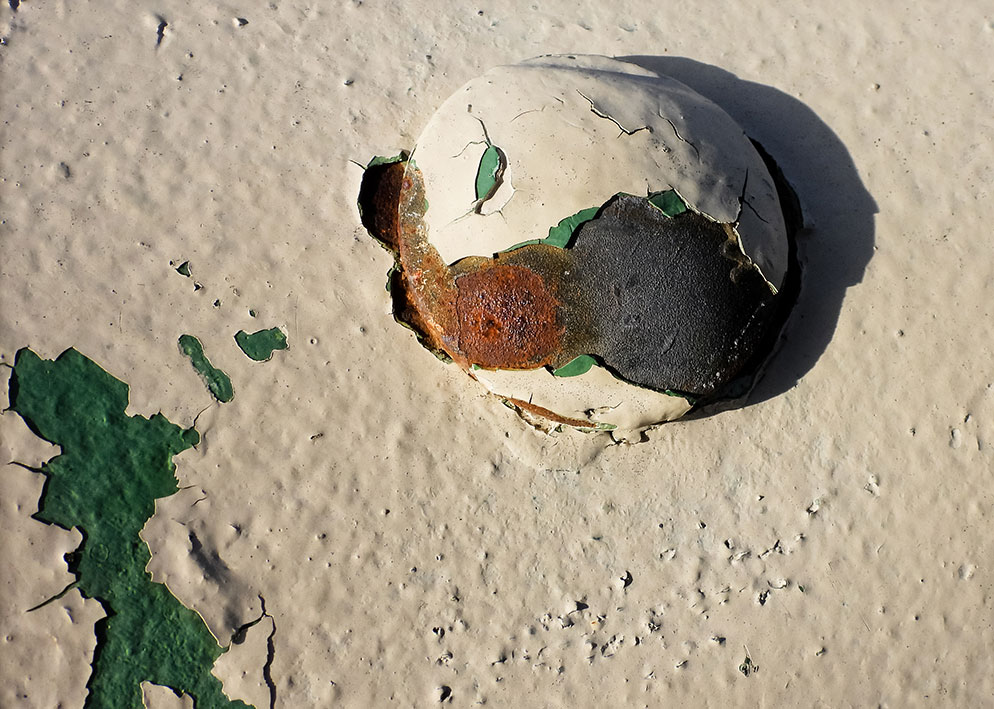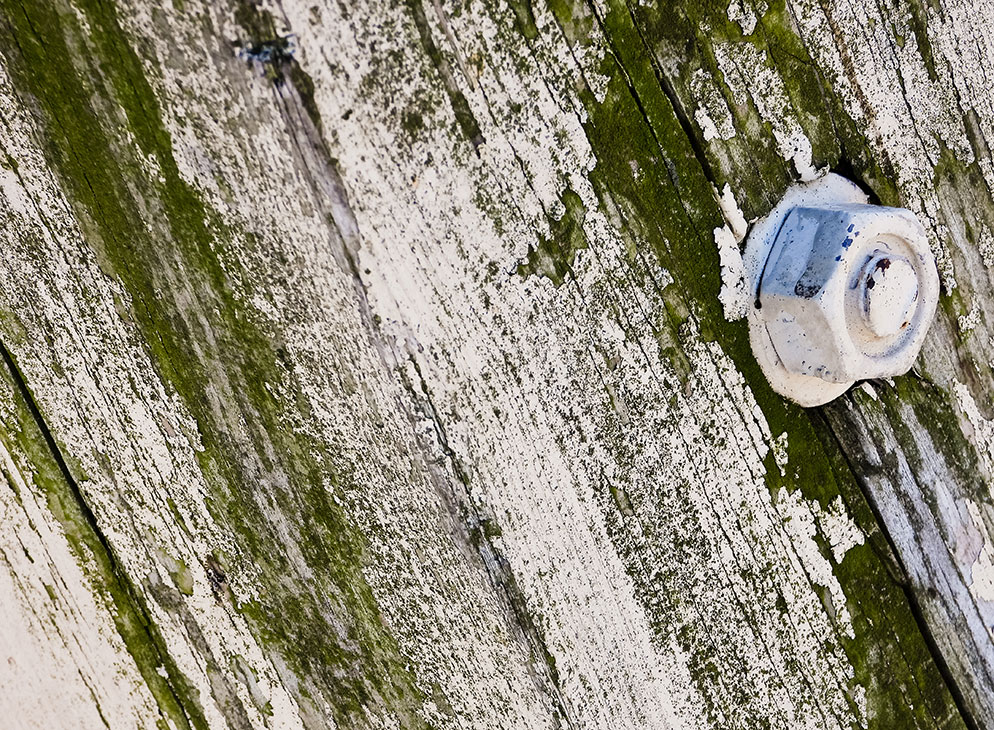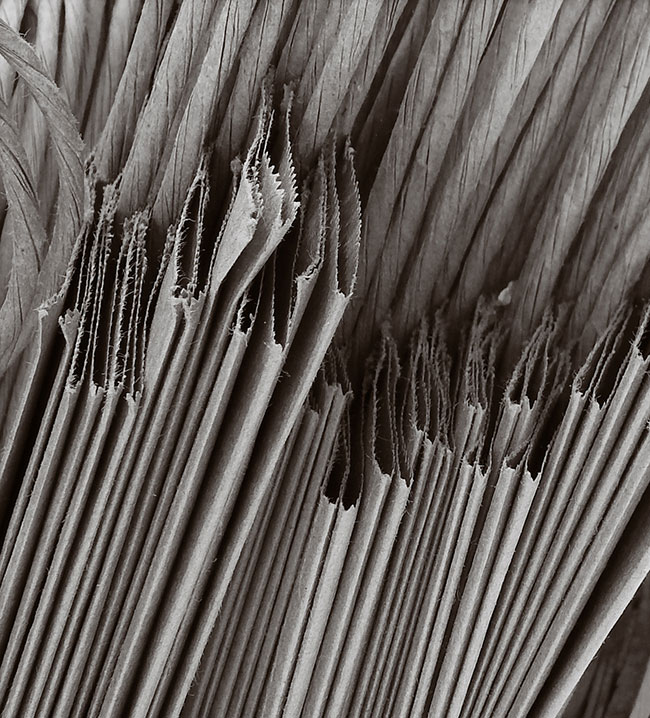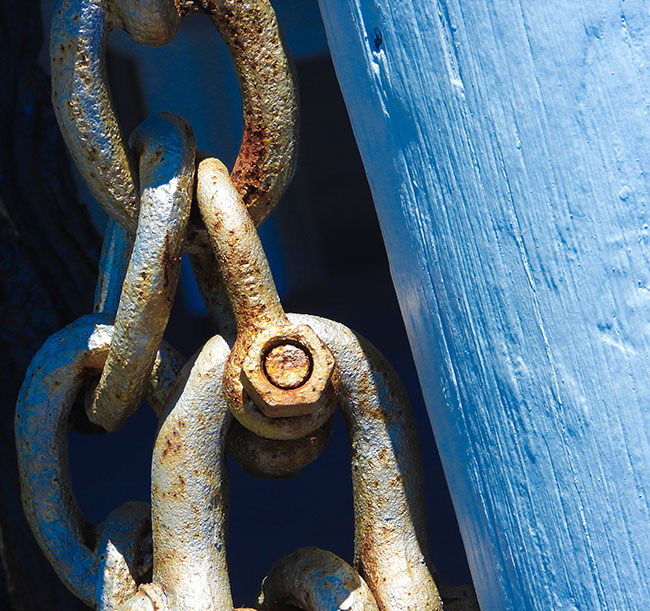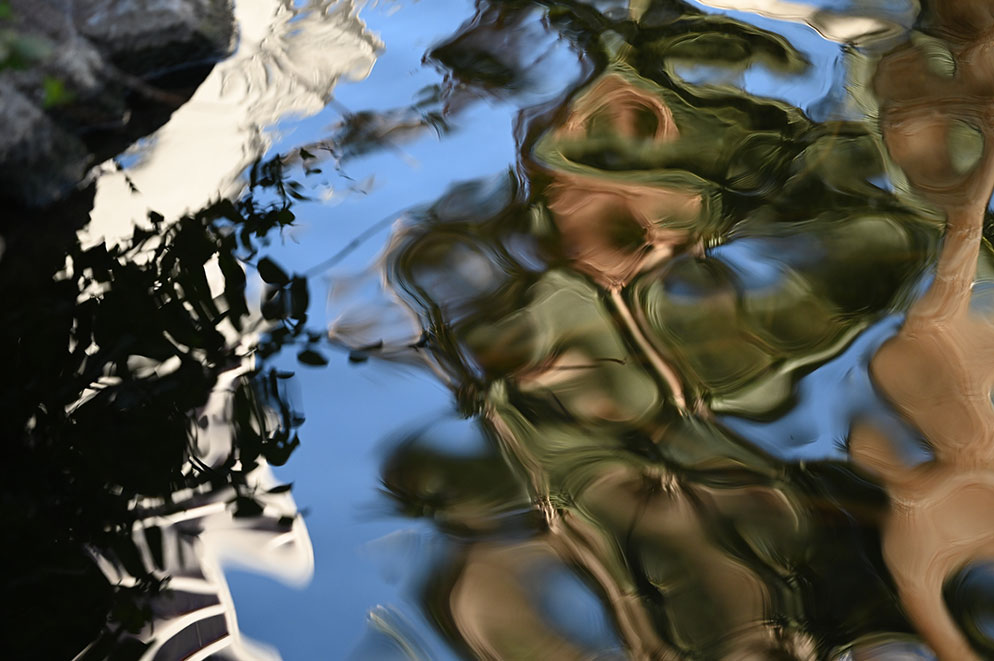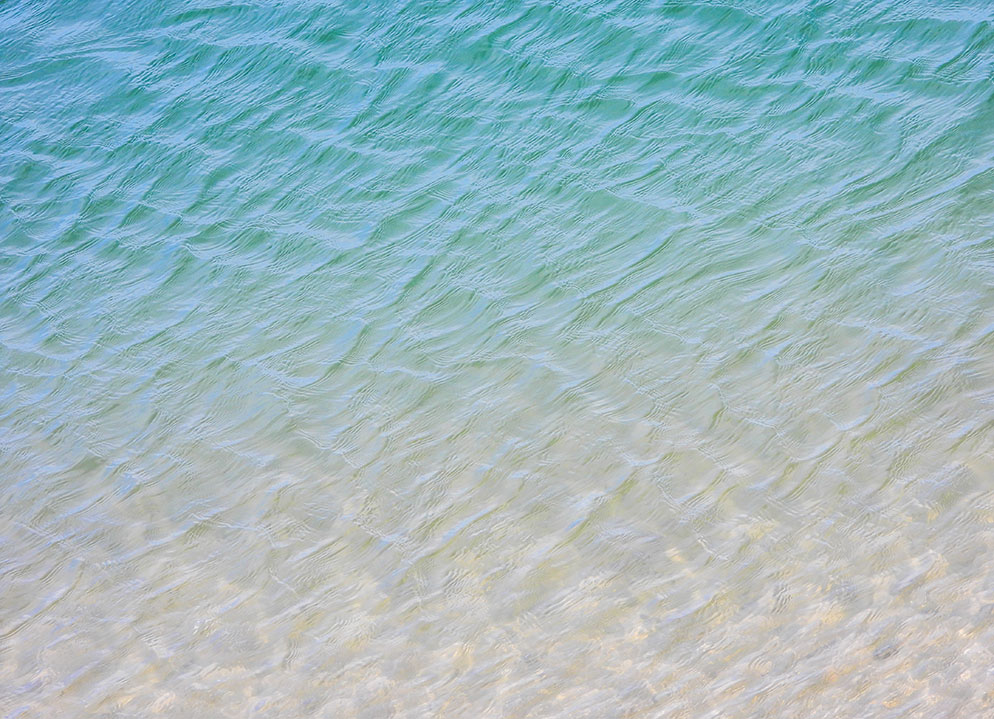Abstract Photos you can Shoot Close to Home
Sometimes the subject of your photographs may not seem to be a subject at all but more of an abstract scene or view.
The chain link fence provides the pattern, the sunlight adds harsh shadows. The metal plates behind the fence add dimension to an image that might otherwise have been lacking in interest.
This image is all about color, lines and texture as well. The color of the metal area with the rivets painted a seafoam green and the color and lines of the wood paneling juxtaposed against it.
Take a different look at photography—at finding new subjects and new ways to view those subjects. With abstract photography, composition can be key. You can go the route of shooting a macro view of a subject—asking the viewer to try to figure out what it is they’re looking at or simply finding colors or shapes, patterns and textures intriguing enough to you to make a photograph. Use the idea of monochromatic—not necessarily as just B&W but as an image that is all about one color.
You might not even have to walk outside your home, a window into your yard may be as close as you need to venture to take an image of flowering trees. By zooming into the tree so there are no outside elements visible the image becomes a study in color and patterns.
A study in color with slight gradation from yellow to green. Look closely and you see the fine lines present in this giant leaf.
Play on light and shadow. Shadows are just as important in an image as the light hitting the subject.
Mounds of sand separated by rows of water near the shoreline of a beach. An image that iseems monochrome even though it is in color not B&W. Nature often creates some of the most beautiful abstract scenes you might come across.
An example of a fun, monochrome abstract consisting of texture, lines and shadows. The tracks left by a tractor int he sand. But keep looking at the shapes and you might see doll or dinosaur arms. Or do you see somethign completely different?
Feature the mundane. Pick a subject that you might see often in your home or yard, or even on solitary walks in a local park that you can capture. For instance, how many times might you come across walls with chipped and peeling paint, Create an image that is all about the texture, light, shadow, shapes and tones of color. Once you shoot a couple of these types of images, you may find yourself seeking them out and now you’ve got a personal project.
What is it? A macro photo of the bristles of a broom, taken from mere inches away. In the original image there were green bristles in the bottom right corner but they seemed out of place and when cropped out, the image was more pleasing. Keep your mind open to possibly cropping or converting to B&W when looking at the images on a computer.
This image is in color but it looks like its B&W. Zooming in tight to only show a portion of the wheel, the strong sunlight has cast shadows that mimic the curved and straight lines. This image is all about the contrast which separates the subject from the background.
When you begin to look at simple objects differently they become more interesting than ordinary.
Bright sunlight adds contrast to the chipping paint showing the texture of the wood beneath.
B&W images may oftentimes be stronger than color images because they literally take the color out of the equastion. Harsh side light adds contrast, brilliantlyu showcasing the chipping paint and wood fiber texture. The image can further be looked as as just shapes—the shape of the painted area against the area with no paint.
Crop into a subject. Instead of photographing a shed with its moss covered roof, just zoom in on the roof itself. Now you’ve got an image that is all about pattern and color.
Zooming in on the moss covered roof rather than photographing the entire structure makes for a great study in abstracts. The bright green color of the moss pops against the gray of the roofing. The way the moss covers the edges of each roof shingle, gives the image dimension—creating a pattern throughout.
A mossy covered pond is covered in the shadows of the tree cover from above. The viewers eye darts around the image, from the bright areas to the shadows.
Take a macro photo that showcases only a tiny part of a subject. Again, as an abstract, it becomes more a story of shapes, lines, light and shadow and less about what the object really is. Hint at the actual object. Even a close-up of a boulder ceases to become a large rock—and becomes a study in texture and color.
The chipping top coat of paint reveals other colors and rusty metal below. Tiny details are made visible by the close-up nature of the image. The composition is made stronger by adhering to the Rule of Thirds, whereby you place an imaginary tic-tac-toe board over an image and place your subject where the lines meet.
Use of the Rule of Thirds gives you an image pleasing to the eye. Contrast and color play off one another.
A B&W image of small shopping bags stacked together is a study in strong lines.
This image is a great example of how color and texture interplay with one another. As a close-up image, you see the texture of the blue paint and can tell there are layers of older paint underneath. The harsh sunlight highlighting the chain bring out the color of the rust.
Photograph the reflections of an object in water, whether it’s a pond, pool or puddle instead of that object itself. If the water has any movement in it, the reflected subject will become wavy and dilute.
Reflections in water can be some of the more fun subjects to photograph. Each time you snap the shutter you'll get a different picture. Can you tell what objects are reflected? The black and white areas are part of a building, the green, brown and rock colored areas are trees, grass, dirt and rocky outcroppings.
What is more calming than an image of clear, light blue water. You know the sandy beach is just out of view.
Go so far to the abstract that your images become painterly. Use long exposures or blur techniques, make an image more about the bokeh (the blur of the background) than a person or object.
Look around you and see your world differently.

